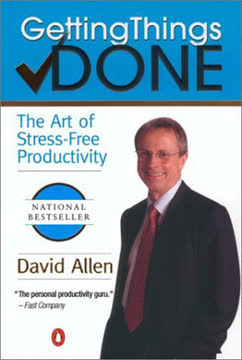Key Takeaways
1. Capture everything that has your attention
Your mind is for having ideas, not for holding them.
Empty your mind. The first step to getting things done is to capture everything that has your attention. This includes tasks, ideas, projects, and commitments. Use a reliable external system to store this information, such as a notebook, digital app, or voice recorder. The goal is to get everything out of your head and into a trusted system.
Create a capture habit. Make it a habit to immediately capture any thought or idea that comes to mind. This frees up mental space and reduces stress caused by trying to remember everything. By externalizing your thoughts, you create a complete inventory of your commitments, allowing you to focus on taking action rather than remembering.
Tools for capturing:
- Physical in-tray
- Digital note-taking apps
- Voice memos
- Paper notebooks
2. Clarify the meaning of each item
Things rarely get stuck because of lack of time. They get stuck because what "doing" would look like, and where it happens, hasn't been decided.
Process your inbox. Once you've captured everything, the next step is to clarify what each item means. Ask yourself: "Is it actionable?" If yes, determine the next action. If no, decide whether to trash it, incubate it for later, or file it as reference.
Define next actions. For actionable items, clearly define the next physical, visible action required to move the item forward. Be specific and concrete. Instead of "Work on project," write "Call John to schedule project meeting." This clarity eliminates ambiguity and makes it easier to take action.
Questions to ask during clarification:
- What is this?
- Is it actionable?
- What's the next action?
- What's the desired outcome?
3. Organize actionable items into a system
Your mind is for having ideas, not for holding them.
Create lists. Organize your clarified items into appropriate lists. These may include:
- Next Actions (sorted by context, e.g., @home, @computer, @calls)
- Projects (outcomes requiring more than one action)
- Waiting For (items delegated to others)
- Someday/Maybe (future possibilities)
Use contexts. Group your next actions by context to increase efficiency. When you're at your computer, you can quickly see all tasks that require a computer. This allows you to batch similar tasks and make the most of your current situation.
Essential lists:
- Next Actions
- Projects
- Waiting For
- Someday/Maybe
- Reference Material
4. Reflect regularly on your system
You've got to think about the big things while you're doing small things, so that all the small things go in the right direction.
Review frequently. Regularly review your lists to ensure they remain current and relevant. This keeps your system trustworthy and your mind clear. Daily reviews help you plan your day, while weekly reviews allow for a broader perspective on your projects and goals.
Maintain perspective. Use the "6 Horizons of Focus" model to review your commitments at different levels:
- Current actions
- Current projects
- Areas of responsibility
- 1-2 year goals
- 3-5 year vision
- Life purpose
Weekly review checklist:
- Collect loose papers and materials
- Process notes and inputs
- Review action lists
- Review upcoming calendar
- Review project lists
- Review Waiting For list
- Review Someday/Maybe list
5. Engage with your tasks proactively
The better you get, the better you'd better get.
Make intuitive choices. With a clear and up-to-date system, you can confidently choose what to work on at any given moment. Trust your intuition, guided by your organized lists and current context.
Balance work. Engage in three types of activities:
- Doing predefined work
- Doing work as it shows up
- Defining your work
Maintain a balance between these activities to stay productive and responsive to new inputs while still making progress on your planned tasks.
Factors to consider when choosing tasks:
- Context (Where are you? What tools do you have?)
- Time available
- Energy level
- Priority
6. Master the art of the next action decision
The secret of getting ahead is getting started. The secret of getting started is breaking your complex overwhelming tasks into small, manageable tasks, and then starting on the first one.
Break it down. For any project or desired outcome, identify the very next physical action required to move it forward. This simple yet powerful technique overcomes procrastination and creates momentum.
Create clear outcomes. Clearly define what "done" looks like for each project. This creates a target to aim for and makes it easier to identify the next actions needed to get there.
Benefits of next action thinking:
- Clarifies projects and goals
- Overcomes procrastination
- Increases productivity
- Reduces stress and overwhelm
7. Practice outcome focusing
Your ability to generate power is directly proportional to your ability to relax.
Envision success. Regularly take time to imagine successful outcomes for your projects and goals. This practice helps clarify your objectives and motivates you to take action.
Use natural planning. Apply the five steps of natural planning to your projects:
- Define purpose and principles
- Envision outcomes
- Brainstorm ideas
- Organize ideas
- Identify next actions
This process aligns with how your mind naturally plans and helps you create more effective strategies for achieving your goals.
Questions for outcome focusing:
- What does success look like?
- What would be the ideal result?
- How will I know when I've achieved it?
8. Implement the two-minute rule
If an action will take less than two minutes, it should be done at the moment it's defined.
Do it now. If a task can be completed in two minutes or less, do it immediately rather than adding it to your list. This prevents small tasks from piling up and clogging your system.
Build momentum. The two-minute rule helps build momentum and creates a sense of accomplishment. It also trains your brain to take quick action on small tasks, which can translate to larger projects.
Examples of two-minute tasks:
- Responding to a quick email
- Making a brief phone call
- Filing a document
- Adding an item to your grocery list
- Scheduling an appointment
9. Conduct a weekly review
It's hard to fight an enemy who has outposts in your head.
Set aside time. Schedule a weekly review to get clear, get current, and get creative. This is crucial for maintaining the integrity of your system and gaining a bird's-eye view of your commitments.
Follow a checklist. Use a consistent process for your weekly review:
- Gather and process all your stuff
- Review your system
- Update your lists
- Get clear, get current, and get creative
The weekly review helps you stay on top of your commitments, realign with your goals, and maintain a sense of control and perspective.
Benefits of the weekly review:
- Clears your mind
- Updates your system
- Sparks new ideas
- Maintains control and perspective
10. Create a trusted system for stress-free productivity
Your mind is for having ideas, not for holding them.
Build trust. Create a system you can trust completely to capture, clarify, organize, and remind you of all your commitments. This allows your mind to focus on actually doing the work rather than trying to remember everything.
Maintain the system. Consistently apply the GTD principles to keep your system current and trustworthy. This includes regular capturing, processing, organizing, reviewing, and engaging with your tasks and projects.
Components of a trusted system:
- Capture tools (notebook, digital app, voice recorder)
- Processing and organizing tools (lists, calendar, filing system)
- Review process (daily, weekly, and longer-term reviews)
- Engagement strategies (contexts, next actions, two-minute rule)
By creating and maintaining a trusted system, you can achieve a state of "mind like water," where you're able to respond appropriately to whatever comes your way without stress or overwhelm.
<output_format>
Here's the output format for the summary:
Key Takeaway Headers
- [Key Takeaway 1]
- [Key Takeaway 2]
...
Key Takeaway Details
1. [Key Takeaway 1]
[Relevant quote from the book]
[2-3 paragraphs of supporting details, ~250 words]
- [Bullet points with additional information, if applicable]
2. [Key Takeaway 2]
[Continue format for all key takeaways]
</output_format>
Last updated:
FAQ
What's Getting Things Done about?
- Focus on Productivity: Getting Things Done by David Allen is a guide to achieving stress-free productivity through a systematic approach to managing tasks and commitments.
- Five Steps of Workflow: It outlines five key steps for mastering workflow: capturing, clarifying, organizing, reflecting, and engaging, which help reduce mental clutter.
- Practical Techniques: The book provides practical techniques and tools applicable in both personal and professional contexts, making it relevant for a wide audience.
Why should I read Getting Things Done?
- Improve Efficiency: The book offers a clear framework for managing tasks, enhancing productivity and efficiency.
- Reduce Stress: Its methods aim to alleviate stress by helping you gain control over your workload and mental space.
- Universal Applicability: The principles are applicable across various aspects of life, from work projects to personal responsibilities.
What are the key takeaways of Getting Things Done?
- Capture Everything: Emphasizes the importance of capturing all tasks in a trusted system to clear mental clutter.
- Clarify Next Actions: Stresses the need to clarify what each task means and determine the next physical action required.
- Regular Review: Advocates for regular reviews of tasks and projects to maintain clarity and ensure nothing is missed.
What are the five steps of mastering workflow in Getting Things Done?
- Capture: Gather all tasks and commitments into a trusted system to ensure nothing is forgotten.
- Clarify: Determine what each item means and what action is required for clear next steps.
- Organize: Categorize tasks into appropriate lists and systems for easy access and review.
- Reflect: Regularly review your lists to maintain clarity and focus on what needs to be done.
- Engage: Make informed choices about what to work on based on context, time, and energy.
What is the two-minute rule in Getting Things Done?
- Immediate Action: If a task can be completed in two minutes or less, it should be done immediately.
- Efficiency Boost: This rule helps reduce the number of items on your to-do list and keeps your workflow moving smoothly.
- Practical Application: Particularly useful in managing emails and quick tasks, maintaining a clear and organized system.
How does the GTD method help with stress management?
- Clear Mental Space: Capturing all tasks helps clear mental space, reducing anxiety about remembering everything.
- Structured Approach: The structured approach allows focus on tasks without feeling overwhelmed.
- Increased Control: Regularly reviewing and organizing tasks gives a sense of control over your workload.
What is the Natural Planning Model described in Getting Things Done?
- Five Phases: Consists of defining purpose and principles, outcome visioning, brainstorming, organizing, and identifying next actions.
- Intuitive Process: Reflects the natural way our brains plan and execute tasks, making it easier to engage with projects.
- Practical Application: Enhances project management skills and ensures all necessary steps are taken to move projects forward.
How can I implement the GTD method in my daily life?
- Set Aside Time: Allocate specific time blocks to implement the GTD method, ideally two uninterrupted days.
- Create a Workspace: Establish a dedicated workspace with necessary tools to facilitate the capturing and organizing process.
- Follow the Steps: Systematically implement the five steps—capture, clarify, organize, reflect, and engage.
What is the importance of the Weekly Review in Getting Things Done?
- Maintain Clarity: Essential for maintaining clarity and ensuring all tasks and commitments are current and organized.
- Capture New Items: Allows gathering and processing of new items that have come up during the week.
- Reflect on Progress: Provides an opportunity to reflect on progress, reassess priorities, and adjust action plans.
How does Getting Things Done define a project?
- Multistep Outcomes: A project is any outcome requiring more than one action step to complete.
- Weekly Review Importance: Projects need regular review to ensure they remain active and relevant.
- Project Inventory: Keeping a complete inventory of projects is essential for effective management.
How does Getting Things Done suggest managing e-mail?
- Organize Actionable E-mails: Create specific folders for actionable e-mails, such as an "@ACTION" folder.
- Two-Minute Rule Application: Apply the two-minute rule to e-mails to prevent backlog and maintain communication flow.
- Regular Processing: Regularly process e-mails to keep your in-tray empty, involving deleting, filing, and moving actionable items.
How does Getting Things Done address procrastination?
- Next Action Focus: Encourages defining the next action for each task to overcome inertia.
- Breaking Down Tasks: Helps reduce overwhelm by breaking larger projects into smaller, manageable actions.
- Regular Reviews: Keeps you accountable and motivated, preventing tasks from lingering indefinitely.
Review Summary
Getting Things Done has garnered widespread praise for its practical, no-nonsense approach to productivity. Readers appreciate Allen's focus on actionable steps and the system's adaptability to various work styles. Many report significant improvements in their organizational skills and stress levels after implementing GTD. However, some find the book's length and repetitiveness challenging. Despite this, GTD's principles have resonated with countless readers, inspiring a devoted following and influencing productivity methods worldwide.
Similar Books
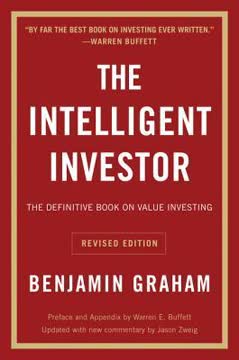
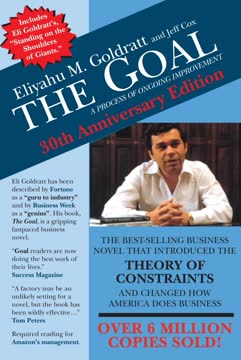
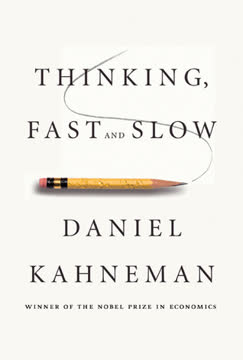
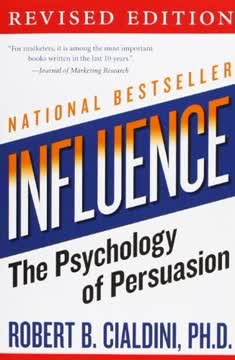


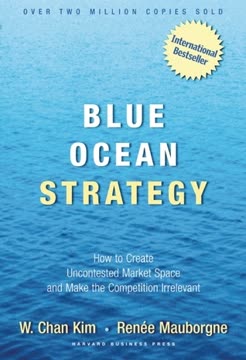
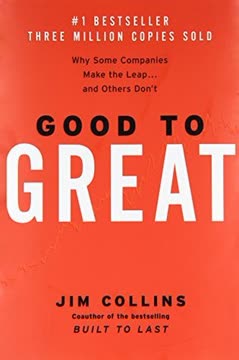
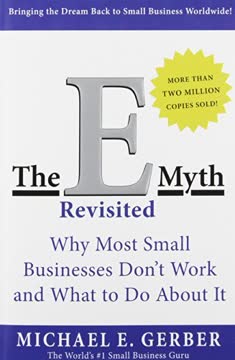
Download PDF
Download EPUB
.epub digital book format is ideal for reading ebooks on phones, tablets, and e-readers.

